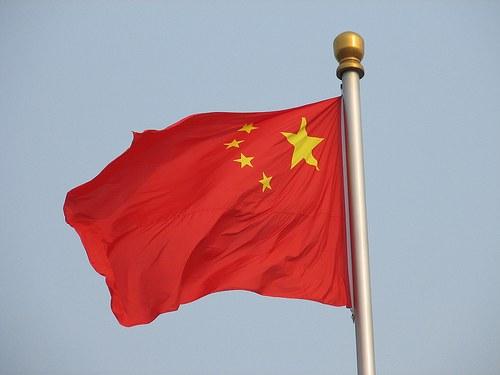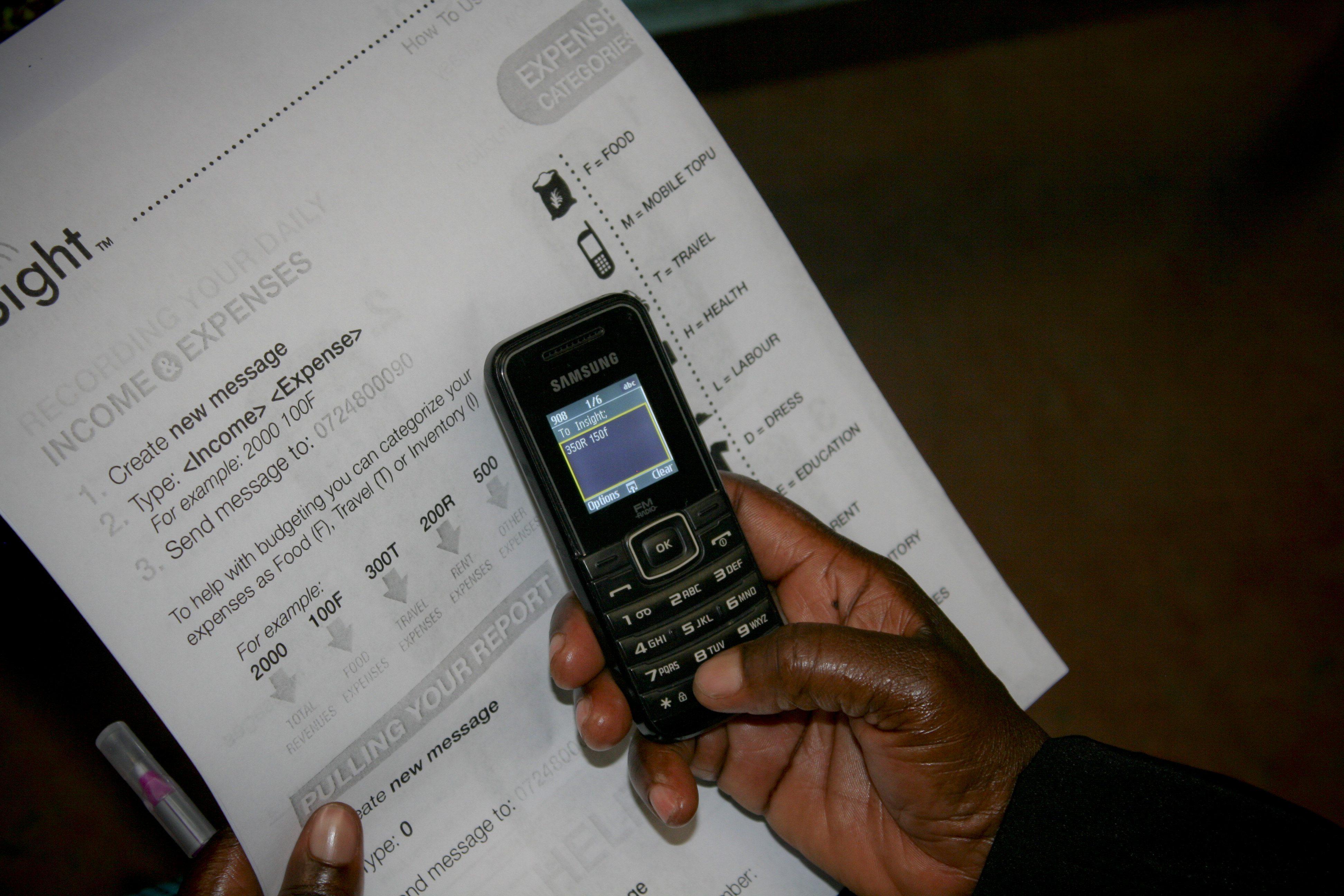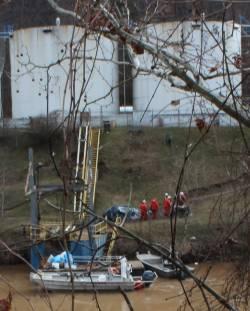UK boasts highest paid CEOs in Europe


The UK has the highest paid CEOs in Europe, according to a comprehensive new study released by Vlerick Business School.
The study looked at the annual reports of all listed companies in Belgium, France, Germany, and The Netherlands – and those of the FTSE 100 in the UK.
Financial data was analysed separately for two categories; companies with total assets of between €1 and €5 billion and companies with total assets of over €5 billion.
The median total compensation of a UK CEO of a company with total assets over €5 billion was found to be just over €4.700.000. The next best paid CEOs were found in Germany at €3.100.00. In contrast, the lowest CEO compensation packages were found to be in Belgium at €1.980.00 and France at €2.290.000
Virtually all the FTSE 100 companies (99%) still use cash bonuses to reward their top management but the value of these has dropped 20% since 2010.
In the UK, over the same period, the value of all incentives such as bonuses, stock options and shares has dropped 35%; which may explain why there was an 8% drop in the total CEO pay. Nevertheless, there was a 2% increase in incentives as a proportion of pay. In Belgium, combined incentives account for 30% of a CEO’s remuneration, whilst in Germany these make up to nearly 60%.
Xavier Baeten, a professor at Vlerick Business School commented: "One positive aspect revealed by our data is the way firms are using KPIs – more and more companies are moving towards offering non-financial incentives to motivate their CEOs. This means that companies are looking at what motivates people beyond financial incentives, which may lead to better performance. Furthermore, I believe CEOs have lost their confidence in being rewarded in shares as they are afraid the share price will drop. "
Picture credit: © Gunter Hofer | Dreamstime Stock Photos
US Oil & Gas Sustainability Spending Sluggish Compared to Extraction Growth


The U.S. oil and gas industry has been spending big bucks for environmental remediation, pollution control and prevention, and industrial energy management, and that figure is expected to grow at a CAGR rate of 4 percent between 2012 and 2017, according to the Verdantix Critical Moments analysis. The analysis covered 87 oil and gas companies with revenues above $1 billion and found the industry spent $5.4 billion in 2012 in sustainability spending and is expected to grow to $6.5 billion in 2017. The study identified that the largest areas of investment were environmental remediation, pollution control and prevention, and industrial energy management, and that on-site renewable energy was the fastest growing area of spending.
For 2014, the report states that the environment, health and safety category will comprise the lion's share of the spending, and environmental remediation initiatives comprise 38 percent. Pollution control and prevention initiatives comprise 17 percent and industrial energy management initiatives total 13 percent. Reading such a report temporarily makes me feel better about the industry, but considering the degradation caused, this is merely a start.
Altruistic intentions are not necessarily at the root of such spending, as some is likely in response to regulatory action by the EPA, such as the recent announcement by Shell to spend $115 million to reduce air pollution at a Houston-area refinery and chemical plant after being found in violation of the Clean Air Act. A technology to reduce air pollution associated with industrial flares used to burn waste gas comprises $100 million of the spending. Regardless of motives, area residents will breath easier and the impact is positive. Avoiding liability is certainly another motivation for increased sustainability spending, but this has a positive impact on humanity.
Although the increase in sustainability spending may seem impressive on the surface, US oil and gas extraction is booming and set to break recent records. When compared to soaring output, spending is really flat at best. U.S. crude oil field production has climbed over the last few years back to the late 1980s levels. The International Energy Agency predicts the U.S. will surpass Saudi Arabia as the largest oil producer in 2015. The Energy Information Administration even predicts the U.S. will surpass Russia as the biggest natural gas producer.
This is in large part due to hydraulic fracturing or fracking, a process that has recently allowed certain natural gas reserves to be drilled that were cost prohibitive a couple decades ago. Although natural gas is cleaner burning than coal, fracking does emit methane (a potent greenhouse gas), and causes air and water pollution. This cheap and abundant supply of natural gas also hasn't been helpful for making renewable energy competitive with fossil fuels. Federal regulation of fracking is largely non-existent, thus relying on a patchwork of state regulations to require safe and clean practices during extraction. Many believe that practices aren't safe enough, resulting in significant environmental damage.
The increase in oil and gas extraction has been credited as helping the economy recover, although this outlook ignores the external costs of contaminated well water, asthma attacks, climate change, collapsing fisheries, and so on. The health and environmental costs that society shoulders due to this polluting industry continues, albeit mitigated by some clean up efforts.
When compared with the output growth of the oil and gas industry, the increase in sustainability spending pales in comparison. Although this spending certainly helps mitigate the huge impact this industry has on greenhouse gas emissions, water quality, worker safety, and so on, this is not a green industry.
China Slaps Massive Tariff on U.S. Imported Solar Materials


In the midst of an international trade dispute over solar components and threats of Chinese tariffs, Michigan-based Hemlock Semiconductors permanently laid off 400 workers in Michigan and Tennessee last March. The company makes polysilicon, the main material for producing photovoltaic solar cells. Sure, a huge percentage of solar panels have been coming from China. But U.S. companies manufactured a significant portion of the polysilicon that went into those panels. The polysilicon was made here, sent to China, assembled into solar panels, and sent back here. The supply chain, being what it is, still benefited U.S. companies and workers, and Chinese companies and workers I might add, as solar use grew. Everybody wins. Economics at its best.
But on Monday, those tariffs became a reality. China, arguably the U.S. and Europe's largest rival in renewable energy manufacturing, announced tariffs of up to 57 percent against polysilicon imports coming from the United States. Polysilicon imports from, for example, Hemlock Semiconductors in Hemlock, Michigan, produced by hundreds of men and women in Michigan and Tennessee.
These international trade disputes can seem somewhat academic until you can point to an actual family kicked to the curb because mom or dad lost a job. Or a whole community losing millions in economic activity. Then the cold, distant world of trade disputes hits way too close to home in a very real way.
The Coalition for American Solar Manufacturing protested China's move on Monday. The coalition keeps a tally of all the businesses and jobs it represents. As of today that number is 243 solar-technology installers, producers employing 22,362 American workers all over the country. The industry represents a significant amount of jobs and revenue for the communities they inhabit.
The CASM feels the tariffs are retaliatory, in response to a trade case SolarWorld (backed by CASM) filed against China's state-backed solar cell and panel industry in October 2011. In addition to the new tariffs, China has announced making illegal and export intensive subsidies available to its own solar industries.
China has a long and storied history of bucking World Trade Organization rules and obligations, resorting to subsidies, currency manipulation and retaliatory tariffs at the expense of U.S. companies and workers. The nation is currently facing claims from the European Union of "dumping" solar glass components, subsidized by China and sold at below market value. Those shenanigans are felt acutely in the growing renewable energy sector in the U.S., though China would certainly argue its measures are justified as the nation has filed its own disputes with the WTO against the European Union for renewable energy subsidies.
The U.S.'s own on-again-off-again support for the renewable energy industry, particularly the Production Tax Credit, have not been helpful either, giving Chinese companies an opportunity to swoop down and cash in on the abandoned spoils of half hearted U.S. efforts to encourage the industry.
Here in the U.S., we are watching the renewable energy market expand while U.S. renewable energy companies seem to be struggling to maintain a secure footing. These trade disputes and frail U.S. policies are costing American jobs, innovation, and businesses.
How Mobile Money Helps the UnBanked Gain Financial Independence


By Shivani Siroya
With over 16 billion dollars flowing through mobile money platforms in Kenya alone, mobile money is continuing to expand rapidly, even into the deepest rural communities around the world. With it comes a valuable distribution platform providing newfound access to technology and information. In the financial sector in particular, various organizations and agencies are partnering up with telecommunications companies (telcos) to use mobile phones as an innovative means for providing an array of financial services to those previously unreachable and unbanked.
Currently, there are over 200 mobile money ventures, with high success potential in Africa, Southeast Asia, and Latin America. In Kenya, the mobile money service M-Pesa has proven significant success with 18 million mobile phone users subscribed and 43 percent of Kenya’s GDP flowing through the service.
By allowing users to send, receive, spend, and even save money all through their mobile phones, mobile money provides a low-cost platform and a level of accessibility never before seen in formal banking. The simplicity of mobile money and its ability to provide affordable and accessible banking services has transformed the financial possibilities and opportunities available for the unbanked and underserved.
With close to half of the Kenya’s population participating in the country’s popular M-Pesa mobile money service, countries such as Pakistan, Bangladesh, Cambodia, Somaliland, Tanzania, and Uganda have been quick to adopt the technology. In 2013, financial giants Visa, Mastercard, PayPal, and Google, along with a multitude of banks have partnered with government organizations and non-governmental social service departments to jump on the mobile money bandwagon and launch these services worldwide.
The question remains: Is mobile money enough to solve this problem of financial access and inclusion? While mobile money services certainly provide a crucial first step to financial inclusion, the industry is now looking beyond basic remittances. Providing mobile users with a full array of mobile financial products and services is the next step towards an inclusive financial system.
Fortunately, the expansion of mobile money has paved the way for new financial products for the unbanked, such as our solution at InVenture our product - InSight – is a simple SMS, Voice, Web and Android – tool that allows individuals in the informal economy to perform daily money management and receive a formal financial identity. Our dynamic algorithm uses cash flow data collected by the system to synthesize an individualized credit score for each user. This information is then shared with product and service companies as well as financial institutions to help individuals qualify for affordable access to business loans, housing, insurance, education services and everyday essentials.
InVenture is now focusing on partnering with mobile money providers, NGOs, and other mobile applications to integrate InSight into their service offerings and allow users to seamlessly extend their mobile subscription into a formal financial identity.
The industry as a whole is now focusing not only on providing access to a wider array of consumer and banking products, but also on increasing education about the importance of savings and credit and on improving the efficiency and financial reach of current providers and retailers. We believe that in order to open up the global marketplace, it is critical to ensure that a proper financial foundation is established. Our goal is that through InSight, we will provide millions (perhaps billions) of individuals with the awareness and formal identity they need to create their own futures and build economies where more people can thrive.
In 2013, companies began to push the envelope of mobile money, moving beyond product introductions to financial literacy and access initiatives. In 2014, we hope to accelerate this movement through innovative collaborations with organizations like the Vodafone Americas Foundation and others that bring together telcos, financial institutions, mobile money providers, and other key industry players. Together, we can make the dream of full global financial inclusion a reality.
Ed note: Vodafone Americas Foundation’s annual Wireless Innovation Project is now accepting grant applications from top innovators in the mobile technology field that have the potential to make a decisive change in the world. Applications for 2014 are due February 3rd!
Shivani is currently the CEO and Founder of InVenture. InVenture is a mobile technology company providing simple credit scoring and accounting tools to the >4 billion people across the globe currently lacking a formal financial identity. InVenture's work has been recognized by USAID, TED, Economist Vodafone, Bloomberg, and Forbes.
She is a 2013 Ashoka Fellow, 2013 TED Fellow, 2011 Echoing Green Fellow and 2011 Unreasonable Institute Fellow. Shivani holds a M.P.H from Columbia University and a B.A. from Wesleyan University.
Twitter: @inventure @shivsiroya
Lightning Strikes: Will Cities Make Us Safer?


Urbanization of America’s once pristine countryside is the latest theory to be offered for why lightning deaths have been declining in the U.S. recently. According to the National Weather Service, 23 people died from lightning strikes in 2013. That’s a mere drop in the bucket compared to 60-70 years ago, when the numbers were in the hundreds.
So is it the American love for city life and tall buildings that has changed that statistic?
Maybe - or maybe not.
The NWS pointed out in its August 2012 bulletin that educating the public about the dangers of lightning, especially in areas like Miami and communities close to water, has made a big difference in reducing fatalities in large population areas.
So have the various warning systems that have been put in place since the 1940s, which aren’t necessarily limited to dense population areas. Not surprisingly with the technological advancements of the 21st century, lightning detectors now come in a variety colors, shapes, and sizes, ranging from fit-in-your palm to ground-based. Of course, as one Miami community unfortunately found out, they aren’t 100 percent on track. A young boy died after being hit by lightning while walking to football practice in the city before his coach could sound an alarm.
And only last week, another piece of evidence emerged that suggests that urban living may not be the saving grace against being hit by lightning. The victim’s location is being blamed for the incessant hits, but interestingly, it’s urban planning in this case that is working against safety measures.
Rio de Janeiro’s 100-ft-tall Christ the Redeemer has already lost a thumb and part of a finger to recent lightning strikes this year. Those statistics are low compared late last year, when the statue was sustaining hits several times a week. Fortunately, none of the recent lightning “injuries” have been as bad as in 2008, when the statue underwent extensive restoration.
In this case, the prominence of city life below its feet is actually what’s causing the problem. An authority from the Atmospheric Electricity Group (ELAT), in Sao José dos Campos, Brazil suggested that the problem may actually be climate change due to the amount of carbon-producing cars on Rio’s busy streets.
“As the city becomes more urbanized, it creates an island of heat, because the vegetation is replaced by asphalt and homes. The increase in the number of cars is also a factor, because it generates more pollution, which contributes to the formation of lightning.” Osmar Pinto, Jr., coordinator of ELAT/INPE explained in an article by William Jones, published in The Rio Times.
In fact, in 2012, ELAT, which is part of the Brazil’s National Institute Space Research (INPE), launched a new program to address lightning concerns: the Brazilian Network of Lightning Detection (BrasilDAT). Its mandate is to "make the region one of the world’s better prepared to monitor climate change.” According to INPE, the prominence of lightning in Brazil’s burgeoning metropolis goes hand-in-hand with the country’s urban spread.
It’s also a theory that’s been explored here in the U.S. Leanna Shea Rose based her doctorate thesis on that question. The weighty-sounding thesis, A Spatial Analysis of Lightning Strikes and Precipitation in the Greater Atlanta, Georgia Region (2008) explored factors related to lightning in one of the nation’s most dangerous locations for lightning storms.
“Numerous studies have found urban enhancement of rainfall and lightning,” notes Rose. However, the reasons for these anomalies are still unclear and explanations invoking urban heating, pollutants and surface roughness have been proposed for each of these phenomena.”
As Pinto at INPE points out, research in the last couple of years indicates that urbanization doesn’t decrease the existence of lightning, but in increases it. So perhaps it isn’t urbanization that is our protecting shield, but education and advance preparation. If predictions are right about the uptick in climate change as global warming increases, community awareness and preparation may be our strongest ally after all.
Image of lighting over Quebéc City, Que. Canada courtesy of Jp Marquis
Image of Cristo Redentor (Christ the Redeemer) statue above Rio de Janeiro courtesy of Klaus
Women in CSR: Cindy Drucker, Weber Shandwick


Welcome to our series of interviews with leading female CSR practitioners where we are learning about what inspires these women and how they found their way to careers in sustainability. Read the rest of the series here.
TriplePundit: Briefly describe your role and responsibilities, and how many years you have been in the business.
Cindy Drucker: Weber Shandwick provides strategic communications and public affairs services, with a specialty in sustainability and social responsibility for clients in the nonprofit, foundation, and corporate sector. I am an Executive Vice President with Weber Shandwick’s Social Impact practice where I lead our global sustainability offering. In this role, I partner with our Weber Shandwick teams around the world to help our clients navigate the complexities of the sustainability landscape through innovative leadership initiatives, unique collaborations, positive stakeholder engagement and effective communications and public affairs strategies.
I’ve worked in the sustainability arena for 22 years – starting in 1992 when it was called “green marketing” and most of the issues were around advancing single environmental attributes such as recycling and recycled content. Today, I’m able to use the insights learned through my prior positions as head of global sustainability for SC Johnson, senior advisor to the president/CEO of World Wildlife Fund and director of stakeholder engagement for the Presidential Oil Spill Commission to build multi-stakeholder initiatives for Weber Shandwick clients that advance a more sustainable future, create shared value, and build reputation capital.
3p: How has the sustainability program evolved at your company?
CD: Sustainability is embedded throughout all of our client work. Sustainability may have started as a niche offering – but today, companies, nonprofits, foundations all understand that sustainability is a mainstream way of addressing their values and commitment to a healthy, vibrant economy and future. We bring a cadre of sustainability professionals with years of expertise in the field combined with experts in all of the communications and public affairs services. By integrating our sustainability expertise with our full range of practices, we can best serve clients in a holistic and comprehensive way.
Beyond helping client partners develop and communicate their corporate social responsibility and sustainability programs, Weber Shandwick received ISO 14001 accreditation in May of 2007 for all of our offices in the United States, exemplifying our own environmentally responsible business practices. Weber Shandwick is the only public relations firm to earn this ISO 14001 certification distinction. And, we are committed to rolling out these processes globally. Moreover, our Washington, DC office has obtained LEED Gold Certification under the U.S. Green Building Council Rating System.
Our firm also has an active employee sustainability program. We have established an Impact project where each of our offices around the world commits to a volunteer program carried out in their community throughout the year. It really allows our teams to demonstrate our commitment to social responsibility and sustainability firsthand.
Weber Shandwick’s Corporate Social Responsibility Committee, comprised of employees from the executive suite to entry level, is responsible for setting, reviewing and delivering on our environmental objectives and targets, and working with our offices worldwide to drive progress. We also host sustainability events, often with partners such as Net Impact, to educate and inform our employees on sustainability issues on an ongoing basis.
3p: Tell us about someone (mentor, sponsor, friend, hero) who affected your sustainability journey, and how.
CD: My Mom is my personal sustainability hero. She was an environmentalist at heart and her appreciation for nature made a big impact on me. From planting ferns and tall grasses in our garden to calling me from the breakfast table to see a bird outside the kitchen window, she was enthused by nature and all it has to offer and she instilled that same respect and appreciation in me.
From a professional perspective, my mentor was the CEO of my first job in the environmental industry. In 1992, I was working as director of environmental affairs for a plastics manufacturing company called Webster Industries. The company manufactured a variety of trash bags – collecting and using plastic scrap and waste primarily as a means to reduce the cost of raw materials. The president of the company, Raj Bal, saw the opportunity to turn the cost savings into a positive value proposition and we subsequently launched the nation’s first 100% recycled content line of plastic trash bags. We won significant marketing and environmental awards and tripled the company revenues as a result of launching the Renew brand. I toured the country working with legislators and government officials to push for recycled content legislation and an expanded recycling infrastructure and spoke about green product marketing at conferences. And I started consulting to other companies interested in learning how to market and communicate green products – early lessons that are still relevant today. That endeavor during my work with Webster Industries and the tenacious leadership by Raj set the path for my career in sustainability.
3p: What is the best advice you have ever received?
CD: “Where you stand depends on where you sit,” is a phrase I learned during my studies at the Kennedy School of Government. The idea resonated with me and I try hard to apply the premise both in my personal and professional endeavors. Whether it is helping a client address a specific issue or simply planning a family vacation, it is helpful to think about the situation from the other person’s perspective instead of just your own.
3p: Can you share a recent accomplishment you are especially proud of?
CD: In my role with Weber Shandwick, I serve as the global sustainability/CSR lead for our work with SABIC (Saudi Basic Industries Corporation), one of the world’s largest petrochemical companies. I’ve worked in many parts of the world during my 20-year tenure in the sustainability field, but it is particularly exciting to partner with a global company that is truly committed to advancing sustainability in the Middle East. Through SABIC’s commitment, I am able to help make a difference in a part of the world where sustainability advancements can have a tremendous global impact.
And, I’m also proud of ziplining in the rain during my recent vacation in Costa Rica….
3p: If you had the power to make one major change at your company or in your industry, what would it be?
CD: A fear of being scolded for “greenwashing” makes many companies risk-averse. Yet, when messaged and positioned correctly, companies can take credit for progress in advancing a more sustainable future and, in doing so, align with the aspirations of their employees, investors and other stakeholders while simultaneously building a leadership advantage and business opportunities. It is about progress – not necessarily perfection. There is ample opportunity to turn sustainability data – Scope 3 emissions, GRI 4 reporting, materiality, etc. – into meaningful and effective communications that motivate employees and other stakeholders to embrace and reward sustainability leadership and innovation moving forward.
3p: Describe your perfect day.
CD: I love to travel, so my perfect day would be waking up and being surprised with an airline ticket to a city or region that I haven’t been to before. I enjoy exploring without a set itinerary or plan – really engaging with people throughout the journey. One of my favorite experiences was when my brother surprised me with a trip to Tibet, filled with adventures such as taking a small fishing boat to Samye, one of the oldest monasteries in Tibet. Traveling gives me a direct appreciation of different cultures, perspectives and landscapes which also translates into value-added insights I can bring to our clients and our work.
Determined to Succeed: Sodexo Addresses Its Twitter Audience


By Neil Barrett, VP, Sustainable Development, Sodexo
During our recent #SodexoCR Twitter chat, we were asked a number of questions that due to time (and the 140 character limit) we were unable to answer or answer fully. The hour-long chat, which touched upon a whole range of topics from integrated reporting to sustainable food systems, supply chain responsibility, and diversity and inclusion, was a first for my team. While we managed to cover quite a bit of ground, here's some context in response to the questions we were unable to get to.
Integrated Reporting
Integrated reporting is a ‘hot’ topic in the sustainability space these days with companies looking for the most effective way(s) to tell their stories and engage stakeholders. For Sodexo, integrating our corporate responsibility throughout the Annual Report was a natural fit; since our efforts as a responsible employer, to support local communities, to promote nutrition, health and wellness and protect the environment can be found in our operations, our supply chain, our offices and, as is often said, in our DNA.
For several years now, the required ‘Registration Document’ already included a chapter on our economic, social and environmental responsibility. It is important to share that over the last few years, this chapter has not only gotten more comprehensive with more details and information, but also become more prominent, moving forward in the report.
Several attendees asked us about the pros and cons of integrating our annual reporting with CR and sustainability metrics. As with any change, shifting to integrated reporting was not easy and required us to understand the needs and meet the various statutory requirements in countries where Sodexo operates, and to build consensus internally.
But our teams were quick to appreciate the benefits of integrating CR into our regular reporting in streamlining processes, reducing costs (of a separate report) and, above all, demonstrating that CR is integral to who we are, what we do and how we engage with our clients, suppliers, consumers, etc.
Quality of Life
@AlisonAzaria asked how quality of life services factor into our approach to corporate responsibility. Ultimately, for us, responsibility comes down to mission and values. And the mission that has guided us for almost 50 years has been twofold:- Improve the Quality of Daily Life of our employees and all whom we serve, and
- Contribute to the economic, social and environmental development of the communities, regions and countries in which we operate.
Those are strong and powerful words and they inextricably tie our corporate responsibility and mission together. This is what we aspire to every day and everywhere. With thousands of additional people in our supply chain, 428,000 employees and 75 million consumers in 80 countries around the world, we have a huge opportunity—and a responsibility—to improve quality of life.
Using our Expertise to Influence and Encourage
Sustainable food systems is a complex topic and garnered several questions during the Twitter chat. While @iPura asked us what initiatives we had in place for improving/securing food safety across our supply chain, @MSCecolabel reminded us that overfishing is the second biggest global environmental challenge after climate change and @brennadavis7 asked how exactly we were supporting sustainable food systems.
When a brand has the kind of reach we do across our supply chain, every decision we take, from sourcing to product selection, transportation and disposal, can have significant impact. Using our influence – such as the power of our purchasing – to select and work with suppliers that share our values and commitments is important—and can go a long way in shifting our suppliers' policies and processes. Our efforts in responsible sourcing include a number of areas that are designed to help ensure a sustainable food system. We shared the example of sustainable seafood, reflecting the increasing importance and demand for people who look to the world’s oceans not only for nutrition but also a livelihood.
Increasingly, people are becoming aware that food waste – the fact that one third of the food produced for human consumption is never eaten – can and must be reduced if we are to provide for everyone on the planet within the Earth’s capacity.
Driving Behavioral Change
One of the questions we were asked, and often get, is how we drive people to change their behavior, whether it be about making healthier choices for themselves or the planet.@andrealearned called it human value, the way in which we reach consumers through our clients, knowing that the only way to get people to change their behavior is to not simply make those choices available to them; we have to bring our expertise – whether it be our chefs or our facilities management professionals introducing a new, more efficient technology – to our clients and consumers and encourage them to give it a try.
Unilever, one of our suppliers, who is also a client, refers to the concept of ‘seductive nutrition,’ which is a great way of expressing that it isn’t about surprising people that something delicious is healthy but rather making something that is healthy so enticing that people want to try it – and come back to it again and again.
Responsibility: Three Things Every Company Should Do
@steph_kennard asked us what three priorities we think every company ought to consider regarding sustainability. Rather than specific issues, which vary from industry to industry, I’d like to suggest that any company, regardless of size, is responsible for its own behavior. And so prioritizing our behavior comes down to three basic tenets:- Your actions define you – to your employees, your customers, your suppliers and the world. But managing one’s own footprint is not enough to really be a responsible company.
- We believe that companies are increasingly aware – and held to account – for if and how they use their influence. If we ask clients (or consumers) to choose us based on our values, we have to do the same thing when we make our decisions on with whom to partner.
- And as I alluded to earlier, companies can and should use their expertise to engage clients and consumers to help them do things that make their lives, and the lives of their loved ones, those in their community and around the world better.
We know that we touch the lives of millions and, therefore, improving the quality of life for millions of people is an incredible opportunity – and responsibility. The only thing more daunting than the challenge is our determination to succeed.
This piece was originally published on the CSRwire talkback blog.
Westpac ranked world's most sustainable company


Australia's first bank Westpac has been ranked number one in ‘Global 100 Most Sustainable Corporations in the World’ at the World Economic Forum in Davos, Switzerland.
The Global 100 is a data-driven corporate sustainability assessment published annually since 2005 by Corporate Knights, an independent media and investment research company based in Toronto, Canada.
Speaking from Davos, Westpac chief executive, Gail Kelly, said: “It is wonderful recognition of the work of our people to help create a sustainable future and deliver long term value for our customers, employees, shareholders and the community.”
As part of its 2017 sustainability strategy, Westpac says it is committed to finding ways to create a better future for the people who bank with, work with or invest in the Group, or are part of its wider community.
Performance achievements in 2013 include its employee engagement level which rose to its highest level of 87%, above the high global high performing norm of 85%, while 42% of Westpac’s leadership roles are now held by women. Westpac Group’s diversity and flexibility survey also indicated that 62% of respondents used some form of flexible work arrangement, up from 18% in 2010.
See here for a full list of Westpac's sustainability achievements.
Barcardi to ramp up responsible drinking efforts


The world’s largest privately owned drinks company, Bacardi Limited, has announced plans to strengthen and expand its responsible drinking and responsible marketing efforts globally.
The initiatives are designed to combat underage drinking, educate consumers on responsible consumption, garner increased support from retailers to promote responsible drinking and reduce the rate of drinking and driving-related accidents.
“These are very real CR commitments and ongoing initiatives,” commented Eric Kraus, senior vp, chief communications and corporate affairs officer. “We see these actions as not only an essential matter of corporate responsibility, but also an important area of collaboration with our consumers, key customers and suppliers, as well as with employees and opinion leaders.”
Bacardi has also undertaken a long-term responsible sourcing plan to purchase the sugarcane-derived products it uses only from sources that are certified as sustainable. These sources have to comply with stringent standards for fair labour, environmental protection and renewable energy, from farmer to end-user. Bacardi has been an industry leader in this effort as a founding member of Bonsucro, a not-for-profit initiative dedicated to reducing the environmental and social impacts of sugarcane production.
The company’s long-term target is to source 100% of its sugarcane-derived products from sustainable sources by 2022. Bacardi is currently on track to achieve its target to source more than 40% of sugarcane-derived products from sustainable sources by 2017.
The commitments follow Barcardi’s publication of its annual report on corporate responsibility entitled, Our Spirit is Clear.
Fallout Continues From West Virginia Chemical Spill


The West Virginia chemical spill has already faded out of the national spotlight but local communities are still feeling the aftereffects. The spill contaminated the water supply of a private water company serving a nine-county area starting on January 9, making the water unfit for any purpose but flushing toilets. Three hundred thousand people have been affected along with businesses, hospitals, schools, and other institutions.
State and water company officials began declaring the water safe to use and drink in some areas last week, but shortly afterward they had to issue an advisory for pregnant women. Since then, the "safe" designation has expanded to cover all of the affected areas, but the West Virginia Gazette reports that hospital admissions for chemical-related symptoms have skyrocketed, indicating that the declaration was premature.
That's just one of the latest developments as West Virginia continues to deal with the aftermath of a major public health crisis, including a new report that the initial chemical identified in the spill may not have been the only one.
A textbook example of what not to do
The company responsible for the West Virginia chemical spill was Freedom Industries, which has since declared bankruptcy after, apparently, the principals took steps to protect themselves. The company's storage facility sits right above the banks of the river, clearly posing a potential hazard.
The chemical that spilled was Crude MCHM, a foaming agent used to wash coal.
Crude MCHM is not specifically covered by federal regulations, as described in a detailed article in the West Virginia Gazette. However, given the location of the Freedom Industries storage tanks above the river, close upstream to a major water supply intake, common sense clearly indicates that state agencies, at least, should have taken the lead to establish a hazard mitigation strategy, in the absence of any responsible measures taken by Freedom Industry.
Adding a new wrinkle to an already devastating situation, last night the West Virginia Gazette reported that another chemical product called "PPH" was included in the tank that leaked, but officials were not made aware of that fact until earlier yesterday, January 21 -- more than ten days after the spill occurred.
Chemical spills and "public culture"
As reported in the Gazette by Ken Ward, Jr. (@Kenwardjr), state officials never worked with Freedom Industries and American Water to develop an emergency response plan, to say nothing of a hazard prevention/mitigation plan. That elicited this comment from former U.S. Chemical Board member Gerald Poje:
Much remains to be investigated in the catastrophe -- managerial competency, local, state and federal competency, regulatory sufficiency and ultimately the public culture that protects or weakens the security of essential infrastructure.
While that phrase "public culture" sinks in, consider that at the height of the crisis, on January 14, Republican Speaker of the House John Boehner spoke with reporter Russell Bermann of The Hill and reaffirmed his party's longstanding commitment to rolling back environmental regulations:
I am entirely confident that there are ample regulations already on the books to protect the health and safety of the American people...What we try to do is look at those regulations that we think are cumbersome, are over-the-top and are costing our economy jobs. That’s what our focus continues to be.
In terms of public culture, two things are going on here. The first, apparently, is ignorance at the highest levels of public policy making. Assuming our sources are correct, Speaker Boehner -- who in this position inhabits third place in the succession line to be President of the United States -- is apparently unaware that there are no federal regulations dealing specifically with Crude MCHM, so "ample" is at the very least woefully understating the case.
Second, and more to the point, Speaker Boehner and his party have engaged in a generations-long effort to frame environmental protection as a jobs-versus-environment zero sum game, in which regulations are a "cumbersome" burden preventing job growth.
In light of this disaster, clearly the hundreds of West Virginia business owners affected by the spill, along with their thousands of employees, will have something to say about whether or not regulation of the local chemical industry has been cumbersome, and to whom.
[Image (cropped): Two of the storage tanks at Freedom Industries along the Elk River, courtesy of WVUMC (West Virginia Conference of the United Methodist Church)]
Follow me on Twitter and Google+.